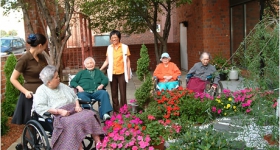FOR 15 YEARS, Hapa Issues Forum was the largest and oldest national advocacy and support group for multiracial Asian Americans. With chapters across the country, the group helped redefine the nation's dialogue on multiracial identity. But, in a way, HIF may have outgrown itself, and it officially closed its doors this fall.
Anthony Yuen, the group's last executive director, says the end of the organization "wasn't nuanced in a way that we just had to quit, but it was a slow fading away." The student and community chapters eventually grew distant from the work of the parent group, with some focusing on their local hapa community, others shifting away to a general multiracial focus and some focusing on social activities. Eventually the multiracial Asian advocacy that defined HIF ceased to reverberate with all the chapters.
"We had fewer and fewer meetings, less and less contacts with the college chapters," Yuen says. "If these students and chapters don't have a connection to [HIF] institutional history or larger issues then what's left is identity exploration, interracial stuff, a lot of these introductory conversations."
The political and ethnic diversity of hapas also contributed to organizing challenges. One of HIF's successes was providing a space for identity exploration and an atmosphere of acceptance for hapas who often felt marginalized within their Asian American communities. But hapas are a diverse group and simply being multiracial doesn't unite people around common goals. And, while HIF focused on local ethnic and nationwide social activism, new recruits often sought out multiracial organizations like HIF for identity exploration.
"Many [of the multiracial community organizers] that I've met are still exploring their cultural identity, which is a very individualized process that can take a long time," says Joel Lyons, a member of Swirl Arizona, a branch of a national multiracial organization. "It's hard to get folks who are going through the exploratory phase to buy into ideas such as bone marrow donations, community building, attending conferences or lobbying Congress because they're still dealing with what they feel their identity is, could be and should be."
HIF's experienced organizers tried activities that transcended identity politics, which may not have appealed to newer members and chapters.
"I found it very difficult to create an ongoing sense of community just around the identity of being mixed heritage. There needs to be a larger project," says Wei Ming Dariotis, an assistant professor of Asian American Studies at San Francisco State University who specializes in mixed-race issues and co-founded a San Francisco HIF chapter. "For example, many of the mixed heritage people I know are artists and connect around the idea of using art as a way to express their mixed heritage identity. The other large project was creating the Fusion Summer Camp Program for mixed heritage kids."
Yuen points out two major accomplishments of HIF. "One, changing the dynamics within the Japanese American community and also contributing to the general Asian American discussion," he says.
HIF was founded by University of California, Berkeley students in 1992 as a response to exclusion and lack of understanding about the multiracial members in the Japanese American community. The group advocated for the acceptance of a multiracial identity through grassroots organizing and media campaigns. HIF also partnered with other national groups to campaign for the "check all that apply" option in the 2000 Census survey, which allowed respondents to choose all races that apply rather than just "other."
HIF's successes, however, has not superseded its necessity, according to Yuen. "There's so many communities that still haven't really embraced their multiracial constituents," Yuen said. "A lot of the discussion is still about how beautiful or exotic we are. There's not a very critical eye towards inequality, power dynamics and white privilege, for example."
HIF created a legacy of multiracial outreach into monoracial Asian communities and spawned other hapa groups. Yuen hopes the work will continue. "There's a vacuum in multiracial organizing right now. There's a strong opportunity for someone or some groups to really come in and take the reins."
EMILY LEACH has been involved in hapa issues since high school in San Francisco. She said part of her motivation for writing about the closing of Hapa Issues Forum was to get in touch with old friends - as the former head of UC San Diego's Hapa Club, she "relished the feeling of walking into a meeting and being in the multiracial majority." She proudly represented hapas everywhere as the 2006 San Francisco Cherry Blossom Queen. Leach is a freelance writer living in San Francisco.









Comments